Adherence to regulations is essential to upholding good patient care standards and averting legal issues in the medical staffing business. Staying ahead of the curve is crucial for medical staffing companies due to the dynamic healthcare laws. These best practices will guarantee that your agency keeps up its compliance and runs efficiently.
Understand Relevant Regulations and Standards
Gaining a comprehensive awareness of the pertinent rules and regulations is the first step toward guaranteeing compliance. These include state-specific medical licensure requirements, federal, state, and municipal healthcare legislation, such as the Health Insurance Portability and Accountability Act (HIPAA), and standards set out by the Occupational Safety and Health Administration (OSHA). Make sure your organization is always compliant by reviewing modifications to these regulations on a regular basis.
Implement Comprehensive Training Programs
Education is the first step toward compliance. Make sure your employees receive regular training so they are up to date on the newest laws and industry best practices. This training must include ethics, safety procedures, and patient confidentiality. Not only does keeping your personnel aware guarantee compliance, but it also improves the caliber of care they deliver.
Conduct Regular Audits
Regular audits are necessary to find and quickly address any compliance issues. All facets of your personnel operations, such as credentialing, record-keeping, and adherence to safety procedures, should be covered by these audits. Utilize audit results to enhance procedures and reduce hazards.
Maintain Accurate and Up-to-Date Records
Maintaining accurate records is essential to compliance. Make sure that all personnel documentation, including training logs, licenses, and certificates, is up to date and easily obtainable. Establish a thorough documentation system that enables documents to be quickly retrieved and reviewed during audits and inspections.
Implement a Robust Credentialing Process
One essential element of the medical workforce is credentialing. Make sure that every healthcare provider that your organization places, has the required training, credentials, and licensing. Verifying employment history, and educational credentials, and doing extensive background checks are all part of a rigorous credentialing procedure. Verify and update credentials at regular intervals to guarantee continued compliance.
Develop Clear Policies and Procedures
Clearly define the standards for staff compliance in your rules and procedures. All facets of their responsibilities should be covered by these regulations, including documentation requirements and patient care guidelines. Make sure that all employees have easy access to these policies and are knowledgeable about them.
Stay Informed About Industry Changes
The healthcare sector is dynamic, with norms and laws changing regularly. You may stay up to date on changes in the field by joining professional organizations, attending conferences, and subscribing to pertinent newsletters. Proactively monitoring industry advancements guarantees that your organization can promptly adjust to novel compliance demands.
Collaborate with Legal and Compliance Experts
Consulting with legal and compliance professionals can yield priceless advice. Having regular discussions with these experts may assist in guaranteeing that your rules and processes are complete and current. They may also help in resolving any potential legal concerns and navigating complicated regulatory environments.
Maintaining medical staffing compliance is a continuous process that calls for awareness, learning, and flexibility. Your agency may continue to provide patients with high-quality treatment, stay out of trouble with the law, and establish a reputation for dependability and professionalism by putting these best practices into effect.
